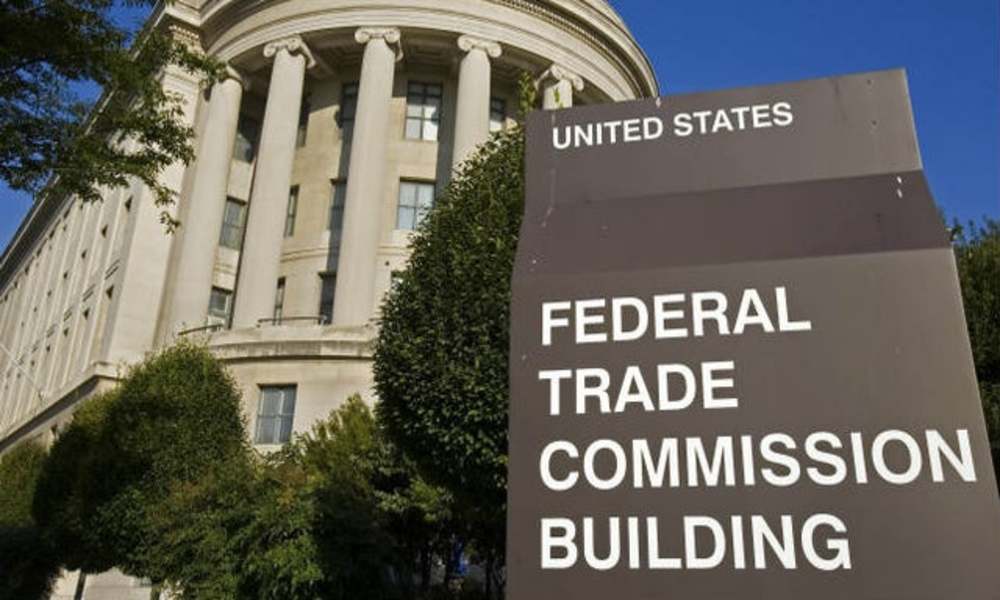
NICOLAS DUSSAUX – APRIL 8TH, 2020
EDITOR: ANDREW BABSON
Why do Americans increasingly despise big tech companies? Just recently, a poll found that “seven out of ten Americans are pretty on board with breaking up big tech […]”. In fact, the might of giants like Facebook, Google, and Amazon is a growing concern reinforced by the high confidentiality and secrecy of their operations and research. The fact that these giants collaborate with the military in the case of Google, ICE in the case of companies like Palantir, or with lobbyists as with the case of Cambridge Analytica for Facebook, does not relieve the public’s mounting concerns over the growing power of big tech companies. These tech giants are increasingly referred to as monopolies, a categorization that raises several questions going forward.
The Rise of the Consumer Welfare Standard
It is broadly acknowledged in economic theory that a monopoly is bad for an economy and the word has very negative connotations in public debate. After the twenties, it disappeared as a prominent topic for political campaigns but has regained exposure lately, to the point that it is a major topic in the current presidential election in the United States. Elizabeth Warren is a fervent advocate of breaking up the “giants of technology”. Why? According to Warren and some observers, these companies act in deeply anti-competitive ways.
Let us break up the meaning of this affirmation and see why it is problematic. The most basic economics classes teach their students that lack of competition is a bad thing because it creates market power. Consequently, the possibility for a company to charge their consumers any price they want without having to fear being put out of business by another company that would charge for a lower cost is harmful to the functioning of the market.
Expanding this analysis to imperfect markets, though still competitive, we expose ourselves to higher prices due to collusion or simultaneous rises in prices that would benefit the few companies in power. In order to avoid these negative outcomes, the government created courts and agencies in charge of operating in markets to enforce competitiveness. In the United States, the Federal Trade Commission and the Department of Justice enforce a handful of laws written to enforce competition among which the famous Sherman and Clayton Acts.
This framework of analysis for the competition is named the Consumer Welfare Standard. It argues that the role of the antitrust authorities is to ensure low prices for consumers. However, this analysis was not always the dominant one and is today ill-suited to understand the problems created by big technology companies. We inherited this theoretical framework from the Chicago School of Economics, famous for the central importance of neoclassical price theory in its thought. More in favor of free markets, the Chicago School was convinced that prices were a reflection of the value rational agents placed on goods and services. The growing influence of the School of Chicago in the seventies led to the creation of governmental guidelines regarding antitrust regulations that ultimately led to the Consumer Welfare Standard while disregarding some other features of competitive markets such as economic structure.
The Chicago School, based on the assumption of rationality, dismisses essential anticompetitive practices based on their alleged unlikelihood. For instance, predatory pricing consists of pricing aggressively below the market price—and below production cost—in order to capture a majority of the market and drive out competitors. It is commonly believed that this is followed by a rise in the monopolist’s price (though this is not always the case), which can significantly harm competition in a market, even if prices remain low. In The Antitrust Paradox, the seminal book that outlined the shift in modern competition law, Robert Bork made the case that such practices were violating the assumption of rationality because companies would generally prioritize profits over growth. Bork, a judge that received his J.D. from University of Chicago, had a significant influence on the Reagan administration and almost became a Supreme Court Justice. He also made the case that corporate mergers generally benefit consumers who can profit from efficiencies generated by such economic concentration, thus resulting in lower prices.
The Flaws of the Consumer Welfare Standard
But antitrust laws were not only written to protect the consumers from high prices. Senator John Sherman, the author of the Sherman Act, argued in front of the Senate:
“If we will not endure a king as a political power, we should not endure a king over the production, transportation, and sale of any of the necessities of life. If we would not submit to an emperor, we should not submit to an autocrat of trade, with power to prevent competition and to fix the price of any commodity.”
If we are trying to reconstitute the legislative history of antitrust laws, we realize that they were not only meant to protect consumers of unreasonable toll: they were a guarantee of freedom for everyone: consumers, buyers and sellers. In a time where capitalism is under fire from critics for the inequalities it creates, the question that can be raised is what if the fault is on the government that fails to implement efficient competition policies? If the Consumer Welfare Standard fails in its goal to keep prices low for consumers, it is probably time to rethink antitrust policies, not only to enhance innovation in the long run, but also to improve social equity in the short run.
How to Measure the Harm
Besides the Consumer Welfare Standard’s lack of efficacy, it is very difficult to carry out an appropriate econometric analysis of the way a company prices its goods and services. This kind of analysis is highly relevant in case of class action suits filed by consumers, buyers, or sellers. Prior to certifying a class action suit, a judge must assess the possibility of carrying out an economic analysis of the market. To determine if a business is actually engaging in price discrimination, the two most common methods are the regression and the correlation matrix. These two processes are used to determine if there exists a “price structure” that would harm the consumer. However, even if conclusions seem easy to draw, these numbers are rarely eloquent. Besides the extreme complexity of aggregating thousands of correlations to prove the existence of the price structures, each of the correlations must be analyzed in order to provide the judge—or the jury if the analysis is carried later during the trial—with a plausible explanation for the common price variation that would demonstrate a “price structure.” This assessment is left to the judge’s discretion, which does not really help the implementation of a common judgment framework. This is one of the major explanations of the relative disorder we note when trying to examine closer the trend in the last antitrust litigations.
The Kill Zone
Lina Khan, a J.D. candidate at Yale Law School that later became an advisor at the Federal Trade Commission, explained in a note in the Yale Law Journal how Amazon embodies the flaws of the current competition analysis framework.
“It is as if Bezos charted the company’s growth by first drawing a map of antitrust laws, and then devising routes to smoothly bypass them. With its missionary zeal for consumers, Amazon has marched toward monopoly by singing the tune of contemporary antitrust.”
Amazon is the perfect example of market structural dominance which cannot be captured by the Consumer Welfare Standard. For instance, Amazon registered an operating loss on half of its reports since its creation in 1995. In fact, the company always prioritized its expansion and invests aggressively in every line of business, subsidizing its losses to gain market shares – and this strategy is efficient. In 2017, Amazon controlled 46% of U.S. e-commerce, and has continued to expand since then. However, over a six year period, while their operating revenue multiplied by 5, they still enjoy meager profits when not incurring a slight loss. The constant losses of Amazon are always compensated by generous investments of shareholders and since their beginning, they reversed the logic of the Chicago School, thereby allowing them to conquer the online shopping business. Starting at a yearly price of $79, Amazon Prime, Amazon’s delivery service, has lost $1.5 billion dollars a year since its creation. However, the loyal base of clients this service has created has allowed the company to raise the toll to $99, and then $119, without losing a significant number of clients. Even though Amazon Prime is hardly profitable for the company, it has allowed it to build a loyal client base, thus giving Amazon a decisive advantage in their other businesses. It makes the case for a company that disobeys the rules: by prioritizing growth over profits, Amazon occupies now a structurally-dominant place in the market by practicing predatory pricing, in contradiction with Bork’s predictions.
For companies like Amazon, Google, and Facebook that are today in a dominant place in their own market, suffocating smaller competitors is easy. By buying smaller companies, copying their innovations, or taking advantage of their dominant position in a closely related line of the business the GAFA (the group formed by Google, Facebook, Amazon and Apple, to which we sometimes add Microsoft) ensure they remain dominant on their own markets. This phenomenon is called the “Kill Zone” and its existence is highly debated in business and within the authorities. As outlined during a meeting in February between the Department of Justice and some VC partners, there is a double phenomenon: shy investors tend to not back startups who venture against established companies, and these companies tend to squelch those new initiatives: “Arnold [a Venture Capital partner] pointed to LinkedIn as the perfect example. He said he’s seen a litany of startups that want to take on LinkedIn and build a new professional network, but none has been able to get a foothold.”
Nevertheless, regulatory authorities seem to be moving towards this renewed understanding of the antitrust policies. In early February, the FTC announced their intention to study extensively the last decade of acquisitions realized by the company to better understand how those could have affected the structure of the markets within which they operate.
Creating the Effective Competition Standard
In an article published in March 2020 in the Chicago Law School Review, Marshall Steinbaum and Maurice Stucke make the case that under these principles, it is possible to establish a new standard to restore competition, that they call the Effective Competition Standard. Through amendments to the Sherman and Clayton Acts, the authors propose to base the common framework for antitrust litigation on an economic structure-based assessment of the market. Instead of looking merely to reductions in output and increase in prices, the authors advocate for controlling competition through a wide range of criterias. Among those criteria, paying more attention to vertical mergers could allow the regulator to look upstream and guarantee fair pricing and open market not only when it comes to selling to customers, but also all along the supply chain. The authors propose to amend the Sherman and Clayton Acts to reflect these principles and to make a national guideline this new framework, acknowledging that various economic and non-economic factors come into play when assessing if a company operates unlawfully. This renewed framework would allow for structural remedies to lack of competitiveness, rather than circumstantial measures such as enjoining mergers or fining companies for anti competitive practices.
Changing the consensus is a long and difficult process, and it will probably take more than a legal fight in Congress to amend those acts in the way that would guarantee the best conditions to develop healthy markets. But antitrust trials work, and our past experiences prove it: the long fight between the government and Microsoft in their litigation against the network Netscape in 1998 deeply changed the practices of Bill Gates’ company, and will maybe go down in history as the first of a long serie of trials to restore true competition in the United States. And maybe give a second youth to the American Dream?
Featured Image Source: The Hill
Disclaimer: The views published in this journal are those of the individual authors or speakers and do not necessarily reflect the position or policy of Berkeley Economic Review staff, the Undergraduate Economics Association, the UC Berkeley Economics Department and faculty, or the University of California, Berkeley in general.




One thought on “A New Breath for U.S. Antitrust Regulations”